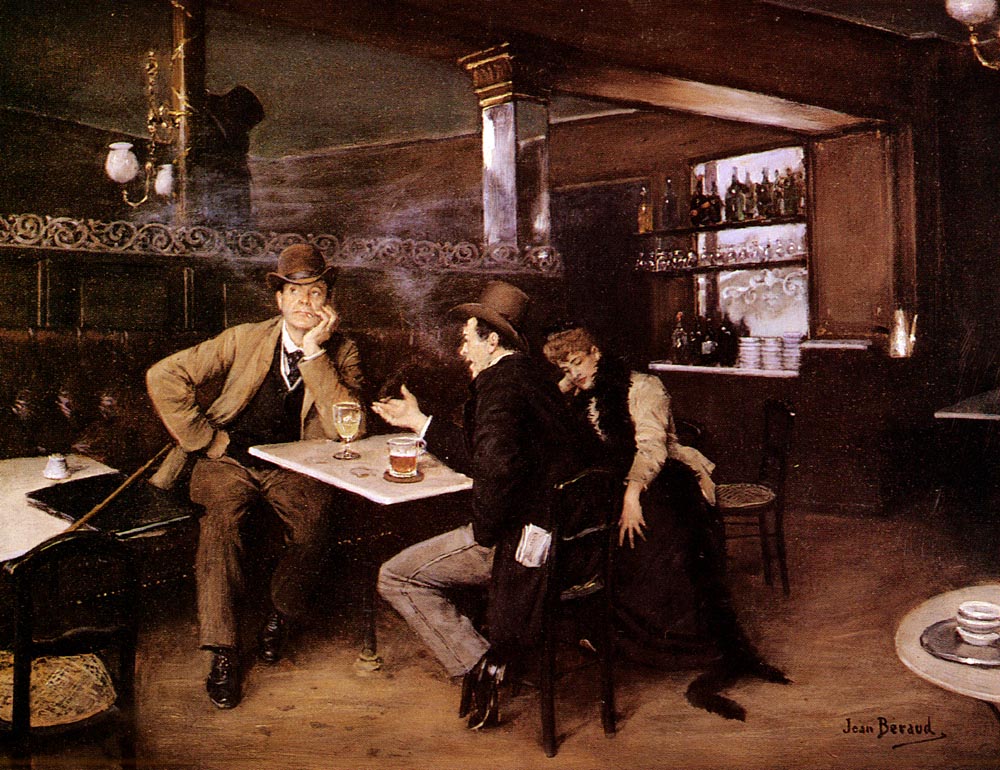|
Griechenbeisl
Griechenbeisl ("Greek bistro" / "Greek bar" - c.f. Viennese German ''Beisl'': "bar" / "pub") is the oldest restaurant in Vienna, Austria founded in 1447. It is located on Fleischmarkt 11 near the Holy Trinity Greek Orthodox Church, Vienna, Holy Trinity Greek Orthodox Church. The restaurant derives its name from the Levant, Levantine merchants, who lived in the vicinity of the building, and the intensive trade relations between Vienna and the Orient since the time of the Babenberger period. The first documentary mention of the Griechenbeisl dates back to 1447. Around 1500, the building later to become part of (and named for) the Greeks, Greek quarter was called "Zum gelben Adler" ("At (the sign of) the Yellow Eagle"). In later records the building is referred to as a "guest house" - this name being associated with a tower forming part of the former town fortifications of circa 1200 and possibly incorporated later into a Gothic architecture, Late Gothic residential building in the ... [...More Info...] [...Related Items...] OR: [Wikipedia] [Google] [Baidu] |
Marx Augustin
Marx Augustin (also Markus Augustin, "Der Liebe Augustin") (1643 in Vienna – 11 March 1685 (or 10 October 1705), in Vienna) was an Austrian minstrel, bagpiper, and improvisatory poet most famous for the song, "O du lieber Augustin "" ("Oh, you dear Augustin") is a popular Viennese song, first published about 1800. It is said to refer to the balladeer Marx Augustin and his brush with death in 1679. Augustin himself is sometimes named as the author, but the origin is uncle ...", which is attributed to him. ReferencesGreatest Hits, 1820-60 (Variety Music Cavalcade) Accessed 11 June 2009. 1643 births 1685 deaths 1705 deaths Year of death uncertain 17th-century Austrian musicians 17th-century Austrian people Austrian male musicians 17th-century Austrian poets Austrian male poets Bagpipe players Musicians from Vienna 17th-century male writers 17th-century male musicians {{Austria-musician-stub ... [...More Info...] [...Related Items...] OR: [Wikipedia] [Google] [Baidu] |
List Of Oldest Companies
This list of the oldest companies in the world includes brands and companies, excluding associations and educational, government, or religious organizations. To be listed, a brand or company name must remain operating, either in whole or in part, since inception. Note however that such claims are often open to question and should be researched further before citing them. Statistics According to a report published by the Bank of Korea in 2008 that looked at 41 countries, there were 5,586 companies older than 200 years. Of these, 3,146 (56%) are in Japan, 837 (15%) in Germany, 222 (4%) in the Netherlands, and 196 (3%) in France. Of the companies with more than 100 years of history, most of them (89%) employ fewer than 300 people. In Japan, very old companies, called '' shinise'', are particularly prestigious. A nationwide Japanese survey counted more than 21,000 companies older than 100 years as of September 30, 2009. Founded before 1300 1300 to 1399 1400 to 1499 1 ... [...More Info...] [...Related Items...] OR: [Wikipedia] [Google] [Baidu] |
Viennese Cuisine
Viennese cuisine is the cuisine that is characteristic of Vienna, Austria, and a majority of its residents. Viennese cuisine is often treated as equivalent to Austrian cuisine, but while elements of Viennese cuisine have spread throughout Austria, other Austrian regions have their own unique variations. Viennese cuisine is best known for its Wiener schnitzel and pastries, but it includes a wide range of other unique dishes. Vienna has been the capital of Austria for more than a thousand years. It became the cultural centre of the nation and developed its own regional cuisine; as such, Viennese cuisine has distinct cooking. The variety of ingredients sold on the Naschmarkt might lead to the thought of a broadly varied cooking culture. In fact, dishes heavily depending on meat make up typical Viennese cuisine: Wiener schnitzel (veal coated in breadcrumbs and fried), Tafelspitz (boiled beef), Beuschel (a ragout containing veal lungs and heart), and Selchfleisch (smoked meat) wit ... [...More Info...] [...Related Items...] OR: [Wikipedia] [Google] [Baidu] |
Restaurants In Vienna
A restaurant is a business that prepares and serves food and drinks to customers. Meals are generally served and eaten on the premises, but many restaurants also offer take-out and food delivery services. Restaurants vary greatly in appearance and offerings, including a wide variety of cuisines and service models ranging from inexpensive fast-food restaurants and cafeterias to mid-priced family restaurants, to high-priced luxury establishments. Etymology The word derives from early 19th century from French word 'provide food for', literally 'restore to a former state' and, being the present participle of the verb, The term ''restaurant'' may have been used in 1507 as a "restorative beverage", and in correspondence in 1521 to mean 'that which restores the strength, a fortifying food or remedy'. History A public eating establishment similar to a restaurant is mentioned in a 512 BC record from Ancient Egypt. It served only one dish, a plate of cereal, wild fowl, and onions. ... [...More Info...] [...Related Items...] OR: [Wikipedia] [Google] [Baidu] |
German Wikipedia
The German Wikipedia (german: Deutschsprachige Wikipedia) is the German-language edition of Wikipedia, a free and publicly editable online encyclopedia. Founded on March 16, 2001, it is the second-oldest Wikipedia (after the English Wikipedia), and with articles, at present () the -largest edition of Wikipedia by number of articles, behind English Wikipedia and the mostly bot-generated Cebuano Wikipedia.] Alternative language Wikipedias, 16 March 2001List of Wikipedias/Table meta.wikimedia.org, Statistics It has the second-largest number of edits behind the English Wikipedia and over 260,000 disambiguation pages. On November 7, 2011, it became the second edition of Wikipedia, after the English edition, to exceed 100 million page edits. The German Wikipedia is criticized because of several ongoing p ... [...More Info...] [...Related Items...] OR: [Wikipedia] [Google] [Baidu] |
Bohemia
Bohemia ( ; cs, Čechy ; ; hsb, Čěska; szl, Czechy) is the westernmost and largest historical region of the Czech Republic. Bohemia can also refer to a wider area consisting of the historical Lands of the Bohemian Crown ruled by the Bohemian kings, including Moravia and Czech Silesia, in which case the smaller region is referred to as Bohemia proper as a means of distinction. Bohemia was a duchy of Great Moravia, later an independent principality, a kingdom in the Holy Roman Empire, and subsequently a part of the Habsburg monarchy and the Austrian Empire. After World War I and the establishment of an independent Czechoslovak state, the whole of Bohemia became a part of Czechoslovakia, defying claims of the German-speaking inhabitants that regions with German-speaking majority should be included in the Republic of German-Austria. Between 1938 and 1945, these border regions were joined to Nazi Germany as the Sudetenland. The remainder of Czech territory became the Second ... [...More Info...] [...Related Items...] OR: [Wikipedia] [Google] [Baidu] |
Plzeň
Plzeň (; German and English: Pilsen, in German ) is a city in the Czech Republic. About west of Prague in western Bohemia, it is the Statutory city (Czech Republic), fourth most populous city in the Czech Republic with about 169,000 inhabitants. The city is known worldwide for Pilsner beer, created by Bavarian brewer Josef Groll in the city in 1842. Administrative division Plzeň is divided into ten boroughs, which are further divided into 25 administrative parts (in brackets): *Plzeň 1-Bolevec (Bolevec and Severní Předměstí) *Plzeň 2-Slovany (Božkov, Černice (partly), Doudlevce (partly), Hradiště, Koterov, Lobzy (partly) and Východní Předměstí (partly)) *Plzeň 3-Bory (Doudlevce (partly), Jižní Předměstí, Litice (partly), Nová Hospoda, Radobyčice, Skvrňany, Valcha, Vnitřní Město and Východní Předměstí (partly)) *Plzeň 4-Doubravka (Bukovec, Červený Hrádek, Doubravka, Lobzy (partly), Újezd and Východní Předměstí (partly)) *Plzeň 5-K� ... [...More Info...] [...Related Items...] OR: [Wikipedia] [Google] [Baidu] |
Pilsner Urquell
Pilsner Urquell (; cs, Plzeňský prazdroj ) is a lager beer brewed by the Pilsner Urquell Brewery in Plzeň (German name: Pilsen), Czech Republic. Pilsner Urquell was the world's first pale lager, and its popularity meant it was much copied, and named ''pils'', ''pilsner'' or ''pilsener''. It is hopped with Saaz hops, a noble hop variety which is a key element in its flavour profile, as is the use of soft water. It is available in 330 ml, 355 ml and 500 ml aluminium cans and green or brown bottles. Almost all draught Pilsner Urquell is sold filtered, but small quantities are available unfiltered, in the Czech Republic and, in very limited amounts, in Germany, the United Kingdom, the United States, Sweden, Hungary, Slovakia and Austria. In recent years, the unpasteurized "tank" version of the beer has become increasingly available. History Pilsner Urquell was the first pale lager, and the name ''pilsner'' is often used by its copies. It is characterised by ... [...More Info...] [...Related Items...] OR: [Wikipedia] [Google] [Baidu] |
Gothic Architecture
Gothic architecture (or pointed architecture) is an architectural style that was prevalent in Europe from the late 12th to the 16th century, during the High and Late Middle Ages, surviving into the 17th and 18th centuries in some areas. It evolved from Romanesque architecture and was succeeded by Renaissance architecture. It originated in the Île-de-France and Picardy regions of northern France. The style at the time was sometimes known as ''opus Francigenum'' (lit. French work); the term ''Gothic'' was first applied contemptuously during the later Renaissance, by those ambitious to revive the architecture of classical antiquity. The defining design element of Gothic architecture is the pointed or ogival arch. The use of the pointed arch in turn led to the development of the pointed rib vault and flying buttresses, combined with elaborate tracery and stained glass windows. At the Abbey of Saint-Denis, near Paris, the choir was reconstructed between 1140 and 1144, draw ... [...More Info...] [...Related Items...] OR: [Wikipedia] [Google] [Baidu] |
Bistro
A bistro or bistrot , is, in its original Parisian incarnation, a small restaurant, serving moderately priced simple meals in a modest setting. Bistros are defined mostly by the foods they serve. French home-style cooking, and slow-cooked foods like cassoulet, a bean stew, are typical. History Bistros likely developed out of the basement kitchens of Parisian apartments where tenants paid for both room and board. Landlords could supplement their income by opening their kitchen to the paying public. Menus were built around foods that were simple, could be prepared in quantity and would keep over time. Wine and coffee were also served. Today, bistros are mostly still part of the hospitality industry. They are often connected with hotels, bars, and pubs. They still often serve cheaper, simplified menus or menus that are not tied to a specific cultural cuisine. Etymology The etymology is unclear, and is presumed to come from a regional word: bistraud, bistingo, bistouille, or b ... [...More Info...] [...Related Items...] OR: [Wikipedia] [Google] [Baidu] |



.jpg)

.jpg)
